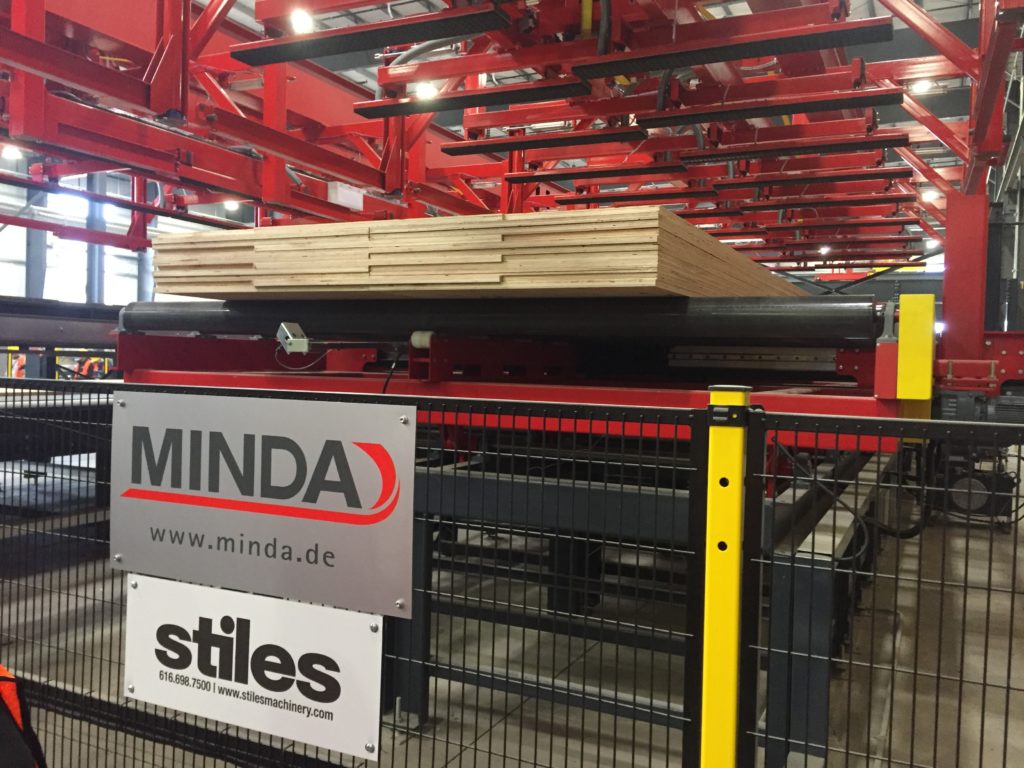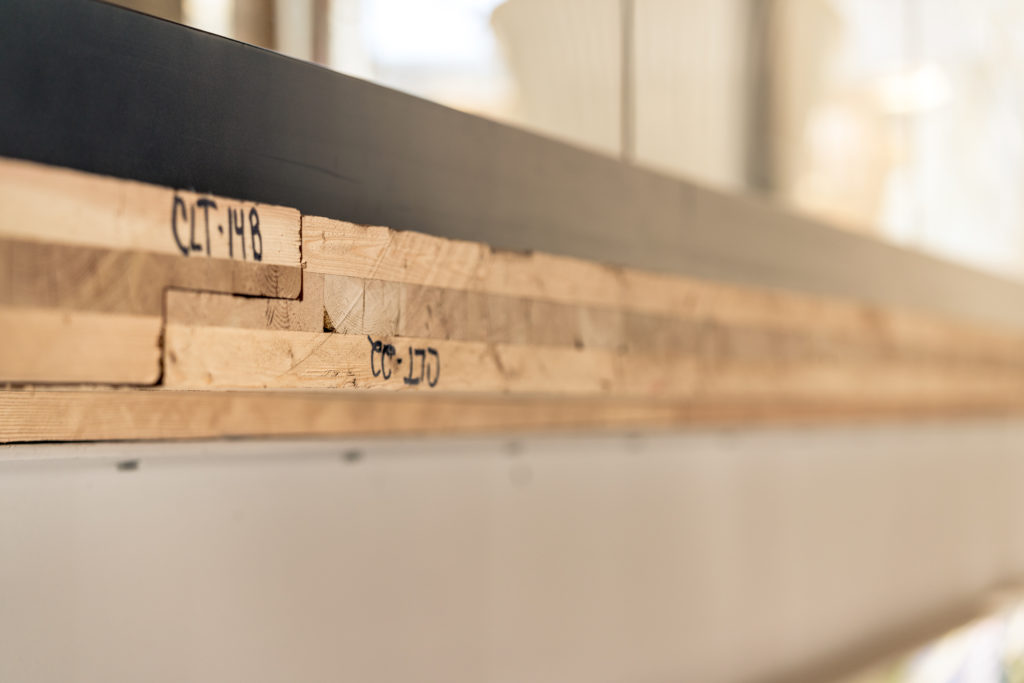
Following in the footsteps of other family businesses that have moved into the mass timber market, Freres Lumber has taken the entrepreneurial leap into a new product line called mass plywood panels (MPP).
Tyler Freres led my International Mass Timber Conference group on a tour of the new facility at his family’s plywood plant in the small town of Lyons, Oregon, about 20 minutes from the state capital in Salem.
“We have been making veneer since the 1950s,” Freres said. “And my grandfather first started in the sawmill business in the 1920s.”

The new plant is amazingly high tech and automated.
One machine lays up the billets of plywood, another lays down the resins to glue them together and a third positions it under the press.
I was surprised that I couldn’t smell anything from the resin glues. Jeff Martin from Hexion, the supplier of the resins, explained the lack of smell was for several reasons.
First the glue performs better than the new EPA and California standards for formaldehyde emissions, and second there are two resins laid down in beads of glue – one immediately behind the other. They start to react instantly, which locks up the compounds, so there is no time for it to off-gas.
When in full production, the plant needs 14 production workers. The other parts of the Freres plywood plant employ about 480 people and are constantly struggling to fill jobs.

Mass plywood panels are a direct competitor with the cross-laminated timber (CLT) that was ubiquitous on the other parts of the field tours to various projects.
CLT is made from sawn boards laid up in layers at 90 degrees to each other, whereas MPP is plywood on steroids – thin sheets of wood laid down in an alternating pattern with resin applied between each layer to capture the strength of the grain of the wood.
Innovation and competition provides architects and engineers with another option for building with mass timbers.
Freres thinks his family will have a competitive edge because they can recover more usable wood out of a log by peeling it compared to sawn lumber.
His competitors think they have the advantage because the CLT manufacturing process is not as energy intensive.
Game on!
The competitors are in the arena doing what they do best: delivering product to architects and engineers who now have more building material options.
Freres uses its waste wood, bark and other material not utilized in the MPP to run its 7.2 megawatt combined heat and power plant (CHP).
The plant also buys urban wood waste from pallet stock that can’t be reused.
Altogether, the plant produces enough power for about 5,000 homes, while also providing the heat needed for processing logs.
The CHP plant provides the plant with renewable energy which adds to the “greenness” of their product, which adds another marketing tool for the family.
The Freres family supplies their manufacturing plant with logs from 17,000 acres of forestland they own and have certified sustainable through the American Tree Farm System.
However, most of their log supply comes from national forests in the surrounding mountains.
On the tour, Freres expressed frustration with the relatively low amount of harvest coming from those lands.
“They provide about 10 percent of Oregon’s harvest,” he said. “The rest is coming from private and state lands, even though they have 60 percent of the forested land base.”
The tight supply makes prices for those logs higher, which hurts their competitive position.
In spite of that, Freres has made a major investment in the new plant because the family sees a bright future for the product as a renewable, carbon-friendly material that can support the burgeoning number of mass timber construction projects on the horizon.

These products are a nice addition to the other products that the forest industry can produce. But, in New England, we keep hearing how such products will become a market for the vast amount of low grade wood available. But I doubt that since much of the low value wood is so defective it’s only good for biomass. I would rather see a big development of biomass rather than CLT and MPP.
Thanks for you thoughts Joe! From my perspective we need these additional value added products AND markets for the low grade, crooked, partially rotten logs. The combination of uses gives the landowner more options for practicing sustainable forestry.